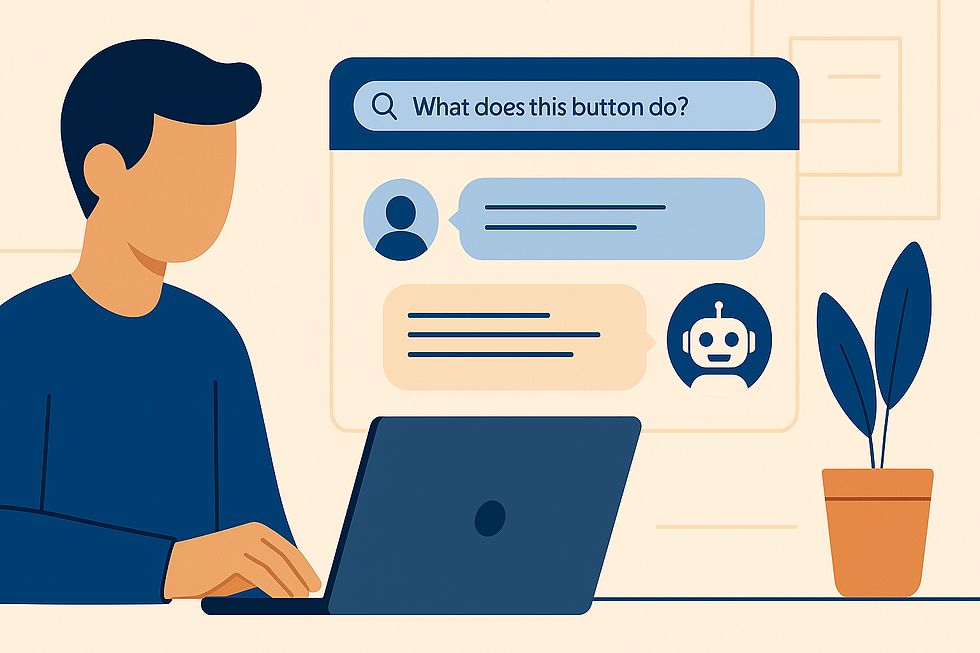Designing with AI, Not Around It: Why Human-Centric Architecture Is the Future
- Anne Werkmeister
- Jun 25, 2025
- 3 min read
Updated: Jun 30, 2025

Human-centric AI isn’t a technology. It’s a practice, a way of thinking.
Just like design thinking reshaped how we approach product development, human-centric AI reframes how we design intelligent systems: not as automated replacements for people, but as collaborative environments where machines amplify human insight, judgment, and creativity.
At Romulus Technology, we believe the next generation of digital transformation will be led not just by what AI can do, but by how intentionally we integrate it into human workflows.
This article is based on the latest research into human-centric AI architecture and explores the practical principles that help teams build systems where:
People stay in control
AI provides meaningful support
Feedback is continuous
And transparency is designed in from the start
Because the future of AI isn’t just smarter systems, it’s systems that are smarter with us.
1. From Black Box to Collaborative Partner
Historically, AI systems have been treated like mysterious black boxes, data in, decisions out, and humans forced to adapt. That approach is not only outdated, it’s dangerous.
Modern architecture demands a collaborative mindset, where humans and AI share roles. In fact, research shows that when systems are designed for collaborative intelligence, decision quality and operational performance both improve.
At Romulus, this aligns with our philosophy: AI should be a team member, not the boss.
2. Process Management for Human Oversight
A critical part of human-centric AI is defining tiered autonomy. Every process in your system doesn’t need the same level of automation.
The best-designed systems use a graduated autonomy framework:
Autonomous Tier: AI makes low-risk decisions (e.g., sorting data or making suggestions).
Augmented Tier: AI flags issues, but humans review them (e.g., anomalies).
Advisory Tier: AI gives input, humans decide (e.g., credit or hiring decisions).
Human Tier: Humans lead, AI supports (e.g., safety, ethics, or compliance).
The result? A smarter system where human oversight scales proportionally to the impact of each decision.

3. Building Transparent AI Architecture
Trust is earned, especially when AI is making decisions.
That’s why transparency by design is now an architectural requirement:
Model transparency: What data trained this model? What are its limitations?
Decision transparency: Why did the system make this specific recommendation?
Process transparency: How is AI interacting with human workflows and tools?
By embedding explainability into every layer of the system, we ensure decisions are auditable, understandable, and improvable.
4. Feedback Integration: From Static to Adaptive Systems
Here’s where most AI systems fall short: they don’t learn from humans post-launch.
Modern, human-centric systems include continuous feedback loops:
From end users
From operators
From observed real-world outcomes
This means moving beyond “thumbs up/down” and toward context-rich insights, including what went wrong, why, and how to fix it. At Romulus, we help teams set up multi-source, weighted feedback architectures that actually shape how systems evolve.

5. Implementation Challenges: The Balancing Act
Creating human-centric systems isn’t easy. You’ll face:
The balance between automation and judgment
The challenge of scaling human oversight
The need to handle human-AI disagreement productively
But with risk-based routing, dynamic thresholds, and conflict-resolution workflows, we can build systems that not only scale, but scale responsibly.
6. The Future: Collaborative Intelligence and Embedded Ethics
We’re entering an era of collaborative intelligence:
Systems where humans and AI co-create, co-decide, and co-learn
Interfaces that adapt to user expertise and context
Ethics that are built-in, not bolted on
This isn’t science fiction. It’s the new foundation of smart, ethical systems, and it starts at the architectural level.
At Romulus Technology, we don’t believe in automating for the sake of it. We believe in building systems that are:
✅Transparent
✅ Adaptable
✅ Accountable
✅ And fundamentally human-centered
Designing with AI doesn’t mean designing humans out of the loop.It means building systems that amplify our intelligence, not replace it.



Comments